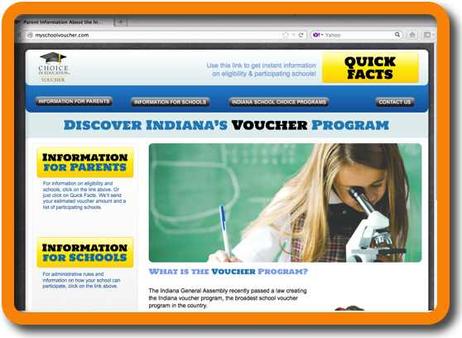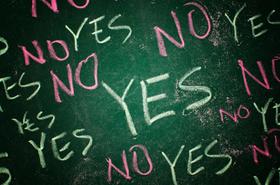Voucher programs have become a hot topic of debate at school districts across the country, but Indiana is one of the first states to truly see firsthand how a voucher program can impact the scope of public and private school. This state is home to the most expansive voucher program in the nation, with more than 250 religious or private schools currently approved for the program. While more than 3,000 students statewide are expected to reap the benefits of the Indiana voucher program this year, not everyone is thrilled with the idea of taking tax dollars out of public schools to fund private education. With two sides to this hot-button issue, we’ll explore the full realm of state voucher programs, including how this particular program is changing the face of public and private education in Indiana.
Details of the Voucher Program
According to a recent report at , the Indiana voucher program passed the state legislature in the spring of this year, and since that time, around 250 private and religious schools have been approved by the state to participate in the program. This means that approved schools can admit students on scholarship, based on the family’s income levels. Scholarship money comes from the tax dollars that would normally be spent on public schooling. The equivalent of the per-pupil tax dollars goes directly to the family to be used to pay tuition and fees at the approved private school of the family’s choice, rather than going into the public school system.
A report at the explains that in order to be eligible for a scholarship to a private school, a student must be enrolled in public school for the two semesters prior to the year they receive the scholarship money. The student must also be currently enrolled in the federal Free and Reduced Lunch program. Families who fall below the Free and Reduced Lunch program guidelines, which typically include families of four who earn around $40,000 or less, are eligible to receive up to 90 percent of the available state tuition support. Families who fall 150 percent below the guidelines, usually earning around $60,000 or less for a family of four, are eligible for scholarships equaling about half of the tuition cost.
Scholarship amounts will be determined by taking the applicable amount of state tuition support, or the total cost of tuition and fees – whichever is less. The first year of the voucher program includes a per-student cap of $4,500 or the full cost of tuition, whichever is less. The first year also caps the total number of scholarships that can be received at 7,500. The second year of the program, up to 15,000 students may receive scholarship money to attend an approved private school of their choice.
Support for the Program
The voucher program has garnered widespread support throughout the state, from parents, students and private school officials. Those in favor of the program assert that it’s not about the money as much as it is about letting families decide for themselves what sort of educational environment is best for their children.
“Education at any level is costly and the voucher program is allowing families to choose the quality academic education they have always desired in a setting where their values match the school’s,” Joy Lavender, administrator for Lakeland Christian Academy told Times-Union. “We have found that the families that are applying for vouchers to attend LCA are families that have always desired that their children attend LCA but were unable to afford it.”
Another supporter of the voucher program is single mother Heather Coffy, who was ready to skip mortgage payments on her home to keep her children in the private schools where they were thriving. Coffy explained to USA Today that one of her sons was failing in public school before she pulled him and his siblings out and enrolled them in a nearby private school. This year, Coffy was prepared to make interest-only payments on her mortgage to cover the cost of tuition until the voucher program became a reality.
“I was going to keep my children in private school no matter what,” Coffy told USA Today. “Now I can pay my full mortgage this month,” Coffy added.
Program Opposition
Despite the many parents and students ready to take full advantage of the voucher program, many in the state say this program is a blatant crossing of the boundaries between church and state, particularly since the large majority of the schools approved for the program thus far are religious schools. A judge is scheduled to hear arguments this month that could result in an injunction to block the program.
“I think the intent is that the money will be going to religious institutions or private institutions to fund those children’s educations, and so that is a voucher program funding religious education,” Teresa Meredith, Indiana State Teachers Association vice president – and one of the plaintiffs in the pending lawsuit – told USA Today.
The other problem with the voucher program is that is taking funding out of already tight public school budgets, which means less money in the school system to educate the children still attending public school. Currently, the financial impact of the program is only about $2.5 to $3 million, which equals about one percent of the total public school budget, according to USA Today. However, Superintendent Eugene White stated that the funding is just one more blow to a budget that is already stretched uncomfortably tight.
“It simply means we are going to have to cut our budget another $3 million,” White said.
Questions? Contact us on Twitter. @publicschoolreview














